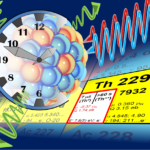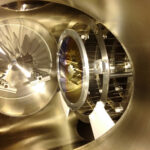Older Posts
17th Workshop on Recoil Separator for Superheavy Element Chemistry ...

Oscillations in the atomic nucleus of thorium-229 to be used as pulse generator for future nuclear clocks ...
A race is on to create the world's heaviest elements ...
Michael Götz, PhD student in our group, is the winner of the first poster prize at the annual meeting of the Section Nuclear Chemistry of the German Chemical Society (GDCh) at the Wissenschaftsforum Chemie 2017 in Berlin. ...
16th Workshop on Recoil Separator for Superheavy Element Chemistry ...
The direct detection of the exotic isomeric state in thorium-229 at the LMU Munich, achieved in collaboration with our group, belongs to the IOP's "Physics World Top Ten Breakthroughs of the Year 2016" ...
The analysis of atomic spectra is of fundamental importance for our understanding of atomic structures. Until now, researchers were unable to examine heavy elements with corresponding optical spectroscopy because these elements do not occur in nature and cannot be artificially created in weighable amounts. ...
15th Workshop on Recoil Separator for Superheavy Element Chemistry ...
Professor David Hinde, Director of the Heavy Ion Accelerator Facility at the Australian National University (ANU) in Canberra (Australia), recently received the Helmholtz International Fellow Award. ...

Measuring time using oscillations of atomic nuclei might significantly improve precision beyond that of current atomic clocks. Physicists have now taken an important step toward this goal. ...
